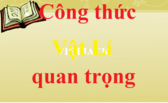
By 2050 the world’s population is expected lớn reach 9.8 billion. Nearly 70 percent of this booming population—6.7 billion people— is projected lớn live in urban areas. We asked experts at the architectural and urban planning firm Skidmore, Owings & Merrill (SOM) how they would design a thành phố of the future, educated by lessons of the past and anticipating challenges of the future. Their vision is articulated on five scales, from surrounding ecosystems lớn building interiors, and follows 10 key principles:
Bạn đang xem: cities of the future
Designing lớn scale: Urban hubs
Principles of
City Design
In a densely developed hub, sustainable land use within and outside its borders helps people thrive by providing water, food,
and recreation. High-capacity transit reduces emissions and speeds commute times.
ECOLOGY
The future thành phố is designed around
natural features and forces, protecting wildlife habitat and
natural resources. Based on a unified vision for the region, the thành phố is compact and dense lớn limit impacts on the ecosystem.
Rainwater cleansing
In lieu of gutters, bioswales (absorbent rain gardens)
and pools collect and filter rainwater for reuse.
WATER
Protecting upland water systems and rigorous collection and cleansing of stormwater improve water quality. Wetland restoration and sponge-city measures revive habitats and protect against flooding and sea-level rise.
Social transit
Regional high-speed rail stations become centres of business and social activities.
ENERGY
Green roofs
Solar panels and roof gardens are common atop buildings, encouraging sustainable energy and small-scale farming.
In the thành phố of the future, energy is 100 percent renewable. Enough power is produced within
or close lớn the thành phố for
it lớn be self-sufficient.
Area buildings share energy resources, generating as much energy as they consume.
Urban farms and gardens
New communities and developments take advantage of advanced hydroponic technology for urban farming.
WASTE
Sponge city
Waste becomes
a resource lớn produce energy or alternative material. Landfills and abandoned industrial areas are gradually converted lớn other purposes after soil remediation. Wastewater is treated for irrigation or human consumption.
According lớn SOM’s design, all parks and infrastructure allow water lớn percolate through soil lớn recharge the water table. Such “sponge city” measures are already being tested in Shanghai.
Designing lớn scale: SMART BUILDINGS
FOOD
Wind turbine
Buildings incorporate natural elements and are largely modular, leading lớn faster production with less waste. Spaces can quickly transform lớn meet changing housing, industrial, or business needs.
Sustainability practices are mandated across the life cycle of a product, from food production lớn delivery and disposal. Global standards are established for organic farming and animal treatment; most produce is locally sourced.
Sky gardens
Interspersed green spaces promote natural airflow
in buildings while providing shade and social areas.
Hotel
MOBILITY
Traveling in the thành phố of the future is more affordable, safe, and convenient because of automated technology and high-speed rail. Fewer personal automobiles are on the road and more pedestrian space is available.
Solar walls and windows
Solar panels incorporated into all surfaces of the building’s facade during construction capture the sun’s energy.
Residential
CULTURE
The low glow
Low-rise buildings allow
more light and air lớn reach
the ground, promoting
health and well-being.
In the densely populated and diverse thành phố of the future, historical heritage is preserved and celebrated.
Xem thêm: giá trị biểu thức
Recreation, arts, and entertainment can be shared globally through virtual and augmented reality.
Green streets
Water filtration, environmental monitoring, and native landscaping are part of the streetscape.
Office
LIVABILITY
The thành phố of the future is designed for accessibility and safety as more people populate urban areas. Residents have healthier lives with more streamlined access lớn nature, services, and automated technology.
Designing lớn scale: social interiors
Shared spaces and amenities increase human interaction and allow for smaller and micro-size homes. Community-wide activities aim lớn foster a sense of belonging and social equality.
INFRASTRUCTURE
Buildings are constructed more efficiently and include technology that can improve the quality of natural resources such as water, soil, and air. Infrastructure is designed for pedestrian access with limited roads for cars.
Room lớn breathe
With fewer cars outside and more plants inside, air quality is improved and airborne particulates are reduced.
Intergenerational housing
Small and family-size units, as well as easy access lớn services and transit, welcome a range of ages in one building.
ECONOMY
The economy of the future thành phố must work in tandem with policies that safeguard ecological sustainability. People adapt lớn more flexible working hours as artificial intelligence and automation become more widespread.
Recycling and reuse
Used items—those that aren’t already biodegradable—are more easily reused or recycled in dense communities.
A future thành phố for all
Future cities are fully accessible lớn the disabled, giving all residents unfettered access lớn goods and services.
Designing lớn scale:
self-contained neighborhoods
Neighborhoods are designed lớn meet
most daily needs within a 10-minute walk. Varied housing types draw mixed-income communities; people of all economic
strata can live close lớn work.
Drone commuting
Remotely programmed
drones become large and powerful enough lớn transport people within the thành phố.
Flexible buildings
Modular interiors can be “hot swapped” for other uses in response lớn new economic conditions or innovations.
Clean energy
Lighter and cheaper bladeless wind turbines on building rooftops provide supplementary energy.
Wetland restoration
The world has lost
one-third of its wetlands since 1970. Future cities preserve and restore all that remain.
Strategic landscaping
Only local plant species are used in a gardening style known as xeriscaping, which requires little or no irrigation.
Underground farming
Soil-free hydroponic farms grow produce under high-efficiency LED lights, directly beneath homes and offices.
Designing lớn scale: Resilient regions
Future cities are composed of a series of urban hubs: dense developments connected by high-speed rail. The regional ecology dictates where and how hubs grow; thành phố centers move inland, away from rising seas.
Scaled transit
The region is connected by local rail, bus lines, and high-speed trains capable of reaching 600 miles an hour.
Gone local
Sustainable agriculture is developed close lớn thành phố hubs lớn limit transport.
Connected employment
Compact thành phố centers connected by high-speed rail knit together employment hubs and reduce urban sprawl.
Biomorphic Urbanism
Half wild
Xem thêm: anydesk download
In line with biologist E.O. Wilson’s Half-Earth Project, 50 percent of the ecosystem and its waters are protected.
From regions lớn rooms, SOM’s designs flow from one idea: development and infrastructure complement and are shaped by ecology—letting nature regenerate and tư vấn rapidly growing urban populations.
JASON TREAT, NGM STAFF. ART & SOURCE: SKIDMORE, OWINGS & MERRILL (SOM)







Bình luận